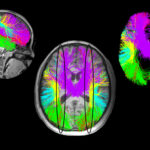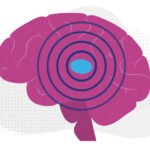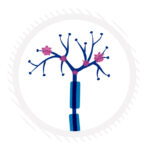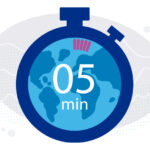Pediatric stroke: Do you believe these three myths?

Think fast: How much do you know about pediatric stroke? If you’re like many clinicians, you may not even realize that kids can have strokes. Yet knowing the signs of stroke in children, as well as when to refer, is crucial for primary care providers as well as specialists. Here, Miya Bernson-Leung, MD, EdM, a neurologist in the Stroke and Cerebrovascular Center at Boston Children’s Hospital, dispels three common myths about pediatric stroke — and offers expert insight on how to recognize and manage it.
Myth: Kids don’t have strokes.
Fact: Not only can strokes occur in babies, children, and teens, but they can even happen in utero. In fact, strokes occur around the time of birth in an estimated 1 in 2,500 babies and affect as many as 11 out of 100,000 children from ages 1 month old to 18 years old annually. The risk of having one is highest in a child’s first year of life, particularly during the few weeks before and after birth. About half of pediatric strokes are ischemic and half are hemorrhagic. Like adults, kids can also experience transient ischemic attacks.
However, the causes of stroke tend to differ between adult and pediatric patients. While factors such as cardiovascular disease, an irregular heartbeat, obesity, diabetes, and smoking are often responsible for adult strokes, strokes usually occur in children for other reasons. Common risk factors for pediatric stroke include congenital or acquired heart disease, blood vessel abnormalities (such as arterial dissection and moyamoya), disorders that increase the blood’s tendency to clot (such as sickle cell disease), infection, or inflammation.
“Sometimes a stroke can be the first sign of one of these medical problems in kids who seemed to be totally healthy,” says Bernson-Leung. “So the possibility of stroke shouldn’t be discounted in kids who present with stroke-like symptoms but aren’t yet known to have risk factors.”
Myth: Pediatric strokes aren’t serious.
Fact: While it’s true that the plasticity of children’s developing brains can make their recovery smoother than that of some adults, stroke is a serious disease that requires long-term care. “Stroke remains one of the top 10 causes of child mortality in this country,” Bernson-Leung points out. “And only about a third of survivors of pediatric ischemic stroke will fully recover from its effects.”
For this reason, babies and children who have a stroke can benefit from an intensive multidisciplinary approach that includes long-term therapy and follow-up from a team of specialists including child neurologists, hematologists, neurosurgeons, interventional and neuroradiologists, physical and occupational therapists, speech and language therapists, neuropsychologists, educational specialists, and physical and rehabilitation medicine physicians.
Myth: Pediatric strokes can’t be treated.
Fact: As with strokes in adults, some pediatric strokes can respond to clot-busting treatment — but time is of the essence. For acute stroke, tissue plasminogen activator (tPA) can be used in research settings but must be administered within the first 4.5 hours after onset of symptoms. In some patients, physicians may perform endovascular thrombectomy, which involves navigating a very small catheter directly into the area of the clot and removing the clot itself.
Whether or not clot-directed treatments are used, for all stroke patients maintaining high blood oxygen levels and optimal blood pressure, ensuring the brain receives the blood flow and oxygen it needs, and controlling blood glucose levels and treating fever and seizures may help limit brain damage.
Acute stroke in kids: When to refer
In adults, clinicians have been taught to look for the most common warning signs of stroke, such as facial drooping, arm weakness or numbness, and speech difficulties. Although these signs can also be used to help identify the problem in children, there are additional signs of possible strokes in infants and children. Bernson-Leung recommends rapid referral to a pediatric stroke center if a child in your care has sudden onset of any of these symptoms:
- weakness on one side of the body
- loss of vision
- ataxia or difficulty maintaining gait stability
- expressive or receptive language dysfunction
- loss of sensation on one side of the body
- new, unexplained seizure, especially if followed by post-ictal lateralized weakness
- sudden alteration of consciousness
For help with assessment or treatment, please call the Boston Children’s Communications Center at 866-771-KIDS to activate a “Stroke Stat.” We encourage rapid transfer of patients to Boston Children’s Emergency Department, where patients will be evaluated to see if they quality for tPA or other therapies. We can arrange transport through the Boston Children’s Transport Team or by Boston MedFlight.
Learn about the Stroke and Cerebrovascular Center and watch Dr. Bernson-Leung talk more about pediatric stroke here.
Related Posts :
-

Unveiling the hidden impact of moyamoya disease: Brain injury without symptoms
Moyamoya disease — a rare, progressive condition that narrows the brain’s blood vessels — leads to an increased risk of stroke ...
-

The thalamus: A potential therapeutic target for neurodevelopmental disorders
Years ago, as a neurology resident, Chinfei Chen, MD, PhD, cared for a 20-year-old woman who had experienced a very ...
-

Could peripheral neuropathy be stopped before it starts?
An increase in high-fat, high-fructose foods in people’s diets has contributed to a dramatic increase in type 2 diabetes. This, ...
-

Status epilepticus: What’s changed, what to know, and a global perspective
Status epilepticus, or a prolonged seizure lasting more than five minutes, is a rare complication of epilepsy and a medical ...





